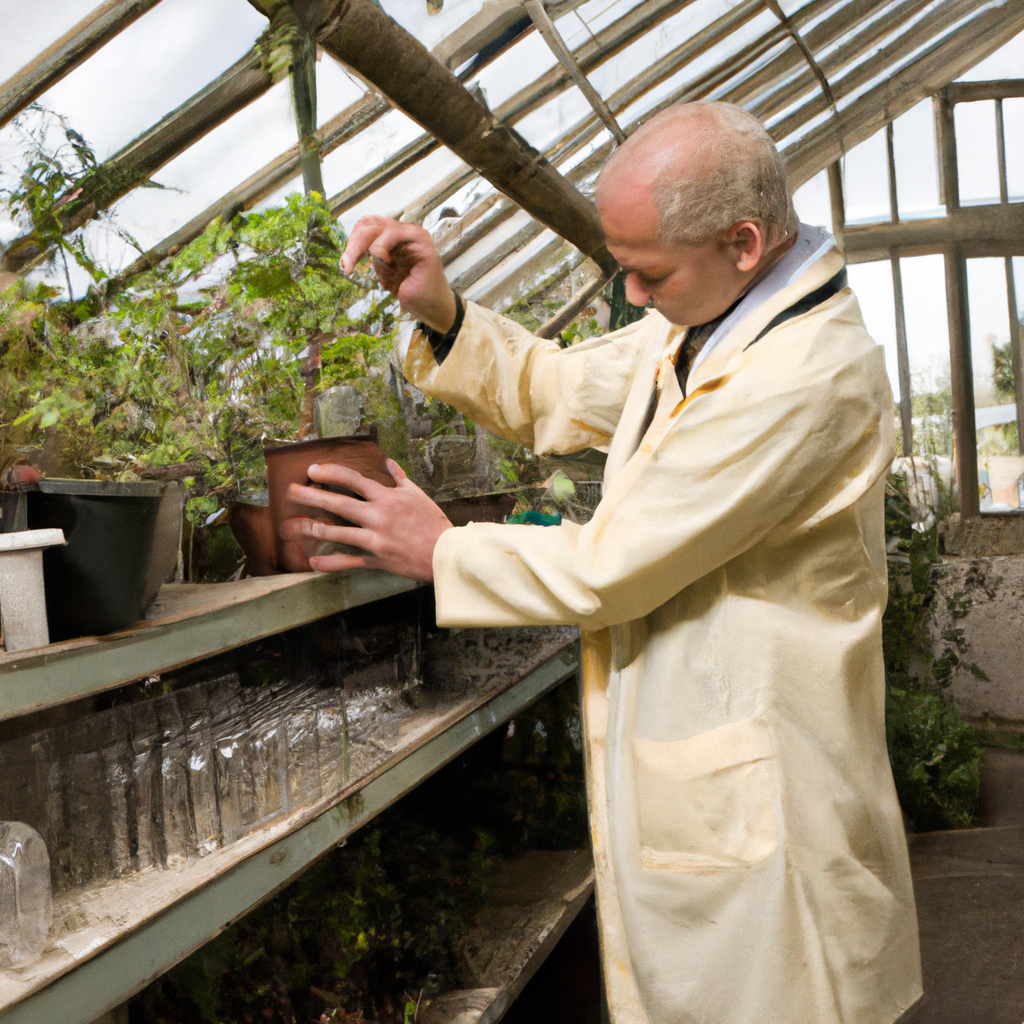Our backyards, balconies, and windowsills are rooted in a world beyond the neat rows of ceramic pots and the tidy flower beds you brag about to the neighbors. This thriving kingdom of flora is an oasis for the mind and soul, bustling with life, texture, and color at every turn. It is a corner of magic where creativity sprouts, happiness blossoms, and wisdom trickles down like raindrops, nurturing the seeds of curiosity deep within. As your hands plunge into the rich soil, you can't help but wonder whether the harmonious dance of cultivating a thriving garden is the masterful artistry of a mysterious alchemist or the precise craft of an empirical scientist. So, fellow green-thumbed explorers, join me on this journey to unearth the roots of this age-old debate—could the essence of gardening lie in the vibrant strokes of an artist's brush or within the measured boundaries of a scientist's test tube?
Blending art and science in gardening
Gardening is a unique blend of art and science, harmoniously merging plant cultivation's aesthetic and practical aspects. The artistic side of gardening allows creativity in designing visually pleasing gardens that evoke emotions. At the same time, the scientific aspect focuses on understanding the biology of plants, soil composition, and climate conditions to ensure optimal growth.
A skillful gardener adeptly integrates both art and science, creating a harmonious and functional outdoor space. This holistic approach results in flourishing plants, enhanced well-being for the gardener, and a positive impact on the surrounding environment.
Horticulture as a science
Horticulture is widely recognized as both a science and an art. As a science, horticulture involves the study of plant cultivation, propagation, and growth, as well as using scientific principles in plant breeding, nutrition, and pest management. Horticulturists rely heavily on research, experimentation, and applying scientific principles to cultivate various plant species successfully.
Furthermore, horticulture encompasses various specialized fields, such as floriculture, pomology, and olericulture. These fields apply scientific knowledge to the cultivation of specific types of plants, such as flowers, fruits, and vegetables. As a result, horticulturists play a vital role in developing new plant varieties, improving crop yield and quality, and maintaining healthy ecosystems.
Horticulture as an art
Horticulture is often regarded as a unique blend of art and science. As an art form, it focuses on the aesthetic aspects of plant cultivation, such as the arrangement of flowers and the design of landscaping elements. Horticulturists use their creativity and vision to create visually appealing gardens, flowerbeds, and landscapes that complement various architectural styles and natural environments.
In addition to its artistic components, horticulture also requires a thorough understanding of the scientific aspects of plant growth and development. This includes knowledge of plant biology, soil management, and principles of botany, which are crucial to the successful cultivation and maintenance of diverse plant species.
Principles and techniques of cultivation
Gardening can be considered both a science and an art, as it requires knowledge and creativity to cultivate plants effectively. The science aspect focuses on understanding the principles that govern plant growth, including soil composition, sunlight exposure, and water requirements. On the other hand, gardening involves combining these scientific principles with visual harmony and design to create aesthetically pleasing landscapes or fruitful gardens.
In practice, skilled gardeners artfully arrange plants visually appealingly while employing scientific techniques to ensure optimal growth. Consequently, gardening may be seen as an intricate combination of science and art, where each element contributes to the successful cultivation and aesthetic arrangement of various plant species.
Local adaptations in gardening
Gardening is a unique blend of art and science that requires creativity and technical knowledge. As an art form, it involves the harmonious arrangement of plants, considering their colors, textures, and forms. This creative process allows gardeners to design and maintain visually captivating spaces that evoke emotions and enhance the aesthetics of their surroundings.
On the other hand, gardening also involves a scientific approach, requiring knowledge of plant physiology, chemistry, and ecology. Gardeners must consider soil composition, climate, and plant requirements to cultivate their desired plants successfully. Moreover, they often adapt their gardening practices to local conditions, using their understanding of environmental factors and regional plant varieties. In this way, the science of gardening allows for innovative and sustainable practices to thrive alongside its artistic aspects.
History of garden development
The history of garden development can be traced back to ancient civilizations, where wealthy citizens created gardens for aesthetic purposes. Examples include the 16th-century BC ancient Egyptian gardens and the influential Persian gardens, extending their influence to Greece and Rome. As civilizations evolved, so did horticultural traditions, leading to distinct garden styles such as the Italian Renaissance and European formal gardens.
In recent times, garden and landscape design has emerged as a unique field that merges art and science, addressing aesthetic values and practical concerns. This evolution of garden development reflects cultural philosophies and attitudes towards the relationship between humans and nature, resulting in various garden styles catering to various functions and preferences.
Gardening in modern times
In contemporary times, gardening has evolved into a perfect blend of art and science. This fascinating discipline allows individuals to express their creativity and aesthetic sense while utilizing their knowledge of various plants, soil types, and cultivation techniques. As a form of art, gardening enables people to design spaces that showcase their unique interpretation of beauty, creating a harmonious environment that brings joy to visitors and the gardener.
On the other hand, gardening is undoubtedly a science that requires a deep understanding of diverse plant species, their growth patterns, and optimal environmental conditions. Moreover, it involves the application of various horticultural practices, such as pruning and grafting, which demand technical expertise. The fusion of artistic expression and scientific knowledge makes gardening a captivating discipline that transcends the boundaries of categorization as solely art or science.

